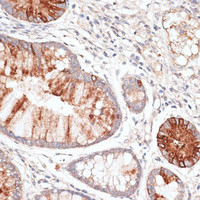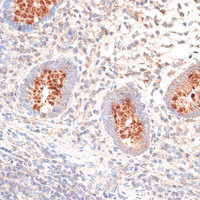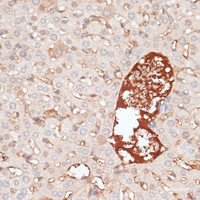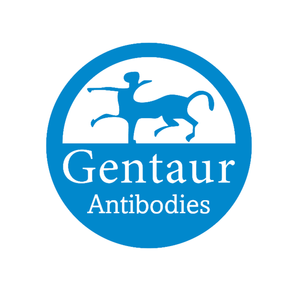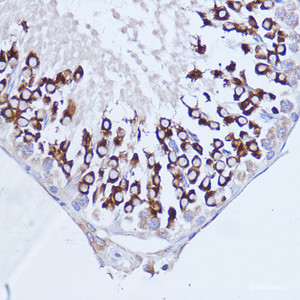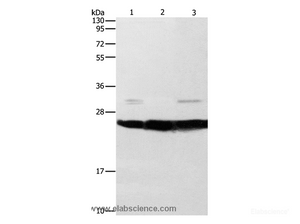KIR3DL3 Polyclonal Antibody | G-AB-07300
Gentaur Antibodies
- SKU:
- G-AB-07300
- Availability:
- 3 to 5 Working Days
- Host:
- Rabbit
- Reactivity:
- Human, Mouse, Rat
KIR3DL3 Polyclonal Antibody | G-AB-07300 | Gentaur Antibodies
Overview: Killer cell immunoglobulin-like receptors (KIRs) are transmembrane glycoproteins expressed by natural killer cells and subsets of T cells. The KIR genes are polymorphic and highly homologous and they are found in a cluster on chromosome 19q13.4 within the 1 Mb leukocyte receptor complex (LRC) . The gene content of the KIR gene cluster varies among haplotypes, although several 'framework' genes are found in all haplotypes (KIR3DL3, KIR3DP1, KIR3DL4, KIR3DL2) . The KIR proteins are classified by the number of extracellular immunoglobulin domains (2D or 3D) and by whether they have a long (L) or short (S) cytoplasmic domain. KIR proteins with the long cytoplasmic domain transduce inhibitory signals upon ligand binding via an immune tyrosine-based inhibitory motif (ITIM) , while KIR proteins with the short cytoplasmic domain lack the ITIM motif and instead associate with the TYRO protein tyrosine kinase binding protein to transduce activating signals. The ligands for several KIR proteins are subsets of HLA class I molecules; thus, KIR proteins are thought to play an important role in regulation of the immune response. This gene is one of the 'framework' loci that is present on all haplotypes.
Category Type: Polyclonal Antibody
Research Areas: Immunology
Synonyms: KIR3DL3, CD158Z, KIR3DL7, KIR44, KIRC1
Reactivity: Human, Mouse, Rat
Host: Rabbit
Isotype: IgG
Gene ID: 115653
Accession #:
Clonality:
Immunogen: Recombinant fusion protein of human KIR3DL3 (NP_703144.3) .
Clone #:
Conjugation: Unconjugated
Swissprot: Q8N743
Santa Cruz:
Calculated MW: 44 kDa
Observed MW: 45 kDa
Concentration: 1 mg/mL
Buffer: PBS with 0.02% sodium azide, 50% glycerol, pH7.3
Purification method: Affinity purification
Application: WB, IHC
Dilution: WB 1:500-1:2000 IHC 1:50-1:200
Storage: Store at -20°C. Avoid freeze / thaw cycles.




